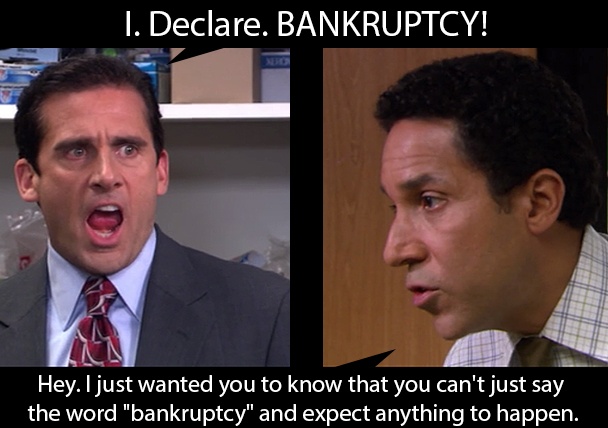Many businesses today are looking for a competitive edge and, increasingly, they are turning to innovation from their employees to help drive that advantage. This includes recruitment firms and beyond. So why is that?
When you look at the 2017 Global Innovation Study by
Strategy& you can count a number of the most profitable and successful companies who find themselves at the top of the list – Tesla, Facebook, Apple, General Electric and Amazon among others. And it makes sense; these companies are always looking for improvements both within their business and their customers. Some examples include:
- New processes that increase efficiency and reduce costs
- New technology that allows employees to do their job better
- New product lines
- New consumer channels
- New target verticals
- Better customer service, and beyond
Inspiring innovation among your employees and creating a culture that supports it can help your business with the aforementioned items, and ultimately drive business growth.
So how do you make this happen? It’s easier said than done. You can’t simply tell someone to be creative and expect it to happen. It’s a significant endeavor, but here are some steps that you can take to move in that direction.
Connect Innovation to Culture and Strategy
When looking to increase innovation within your business your leadership team must first connect the need for innovation to your strategic goals and corporate values. At the end of the day, this initiative must be aligned with the success of the business or your innovation strategy should be tweaked to help you achieve desired outcomes. While I would argue that innovation is important to any business or vertical, the context of each business is unique. Innovation in finance and banking could be drastically different than in software or recruitment, but each could benefit equally from innovation that is in alignment with their business goals.
For example, banking has seen tremendous innovation through the introduction of e-transfers and mobile cheque deposits. A bank’s values might include trust and accountability for example, and your team can take into account the need for security and predictability when considering these new initiatives. The introduction of new technology and service in banking has helped give certain institutions a competitive leg up in a hyper-competitive market which is driven by innovation aligned with business strategy and corporate values. Once there is a clear link between the two, stakeholders must demonstrate buy-in and then take the more tactical steps of facilitating opportunities to be creative and nurturing an environment that will lead to new ideas and ways of doing things.
Translate High Level Goals into Something Tactical
As mentioned above, strategy and business alignment are key to driving innovation that makes a positive impact on the business. But strategy and good intentions are only good if you take action and work towards fulfilling your innovation ideals. Much like when Michael Scott walked out the front door and yelled “I declare bankruptcy”, it doesn’t really happen that easily.
Creativity and new ideas do not magically pop into being just because you have stated your intention to make them happen. Therefore, it’s imperative to take tactical steps toward making things happen. Here are a few ways you can accomplish this.
People Are Your Biggest Innovation Unlock
First and foremost, it’s important for your organization to know that your own people are your biggest opportunity to provide innovation. Ideas that come externally are copied, but ideas that come from within are your innovation and edge. One emerging trend that empowers an organization to generate new ideas and creative solutions is Hackathons or “Innovation Days”. Broadly defined, a Hackathon is an “event with teams collaborating and coming together to create something new, or to solve a particular problem given to them. Typically the event can last anywhere between a day and a week.” Specific time is craved out in a day or even week, and employees are given the opportunity to collaborate in cross-functional teams to work on solving problems or creating new ideas for the business. While Hackathons originated as a developer-specific initiative in the Information technology world, their success has been noted by other disciplines and they have evolved to encompass diverse industries and employees ranging from sales to production to administration and beyond. These events have been proven to be incredibly successful in generating new, meaningful ideas.
Did you know that Facebook’s Like button was conceived as part of a hackathon? It’s true. Hackathons provide employees an opportunity to contribute beyond their day-to-day duties and give groups an opportunity to be heard when they might not otherwise have had an avenue to do so. And this is not just limited to the information technology world. One of America’s oldest toy companies, Hasbro, held a hackathon where 150 participants came and developed 45 products – equivalent to billions of dollars in traditional R&D.2 At the core, the success of these events is tied to driving business outcomes – something that transcends industry. To start, try the following and begin thinking about how powerful the answers your employees could provide would be:
- How can we sell more stuff?
- How can we save money?
- Is there an item/offer that you can’t believe doesn’t exist in our portfolio?
- What’s one thing that could improve productivity in your job?
Again, these questions are just starting points and they need to be aligned with the desired outcome of your business. But the answers you get could make a measurable impact. Hey, maybe these events could be the starting point for a new product line or business process you never thought of? Maybe one of your employees creates the next “like” button that has just as a profound impact on your business as it did for Facebook? Realistically, the purpose of the post is not to focus on a specific event. They are a means to an end, but the goal is to illustrate that it is essential to set an overarching innovation strategy and work towards achieving it.
Recognize the Rewards – Profits and People
Hackathons / Hack Days / Innovation Days, or whatever you want to call them, sound great in theory. As does “fostering an innovation culture”. But the most compelling endorsements come directly from the organizations and employees that implement these opportunities and live in these environments. Shopify, a Canadian e-commerce company and IT success story, had this to say about its events:
“…(these events) aren’t just about building awesome things in two days. They’re about to take a creative break from regular duties. They’re about having fun and giving our employees autonomy to act upon their pent-up ideas. They’re about team building and getting to work with people you usually don’t get to work with. And Hack Days are about taking a project – no matter how big – from start to finish in just two days. Hack Days are a tremendous learning experience with tangible outcomes, and for that have become an important part of our cultural repertoire of things we do to challenge ourselves.”
A major takeaway from this is that events that inspire innovation do more than generate new products and ideas. They bring together people through a shared purpose. The benefits are myriad – as mentioned earlier in this post, innovative companies outperform the competition – innovation, is inspired by a culture that allows new ideas and a tangible call to action (innovation days are just one example that I have used, there are too many to list) lead to new ideas, collaboration and employee engagement. At a more granular level, Brand Manager and CPG marketing specialist
Tony Insua had this anecdote to offer:
“Top industry talent is drawn to innovative companies. They are inherently driven to push boundaries and will seek out opportunities to do so.”So not only is innovation a competitive edge as it relates to profits, it gives you a leg up in attracting and retaining great people as well. Through this, the power of innovation becomes clear.
Sources:





